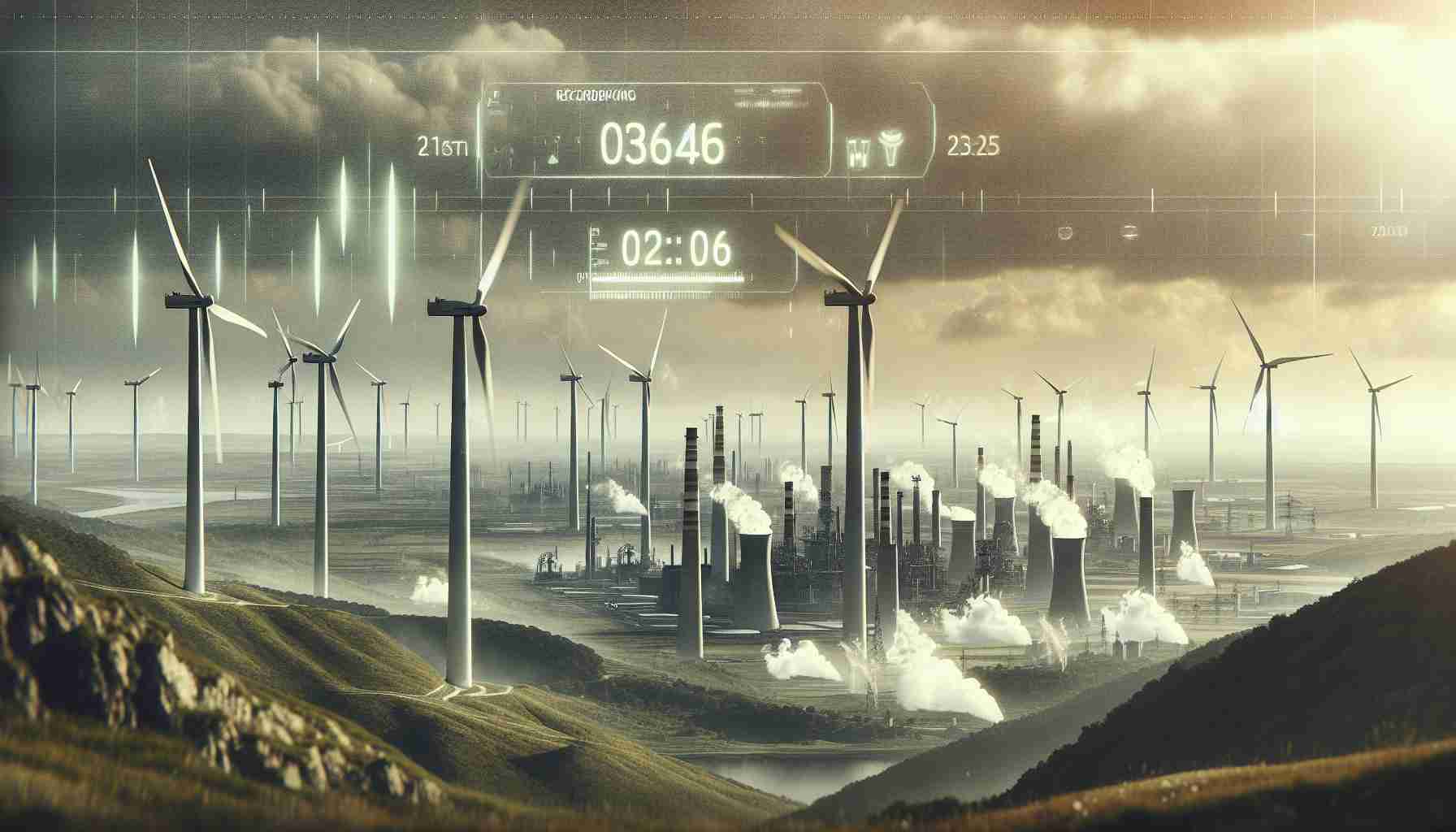
Significant Shifts in Britain’s Energy Landscape
Recent data reveals that wind energy has reached unprecedented levels in the UK, generating almost 83 terawatt-hours (TWh) of electricity throughout Great Britain last year. This marks a notable increase from approximately 79 TWh in 2023, as reported by the National Energy System Operator (Neso).
As the country transitions away from polluting fossil fuels, electricity generation from these sources dwindled to just over 26% of the total. In contrast, renewable energy sources, including solar power, have seen a rise, contributing significantly to the cause. The UK government aims to limit fossil fuel-derived electricity to below 5% by 2030, with ambitious plans in place for a clean energy future.
In 2024, renewables accounted for around 56% of Great Britain’s electricity, a significant leap from 10% in 2014. This transformation underscores a broader commitment to reducing carbon emissions, with the average carbon output plunging to 124 grams per kilowatt-hour—a record low.
While wind energy excels during favorable weather, it is supplemented by natural gas facilities that step in during calmer periods. The government recognizes the importance of maintaining gas supply to ensure reliability as the country moves toward fully renewable sources.
As Britain charts its course toward sustainable energy, the advancements in wind power signal a promising future, although the conversation around pricing and energy accessibility remains ongoing.
Britain’s Renewable Revolution: The Future of Energy in 2024 and Beyond
A Transformative Year for Renewable Energy
The landscape of electricity generation in the United Kingdom has undergone a significant transformation in recent years, with 2024 marking a pivotal moment for renewable energy. Recent statistics indicate that wind power alone generated nearly 83 terawatt-hours (TWh), a jump from approximately 79 TWh the previous year. This progress highlights the nation’s commitment to renewable resources—a trend expected to continue as over 56% of Great Britain’s electricity now derives from renewables, markedly up from just 10% in 2014.
Compacting Fossil Fuels: The Goal for 2030
Amid these advancements, fossil fuel use has dramatically diminished, accounting for just over 26% of total electricity generation. The UK’s ambitious goal to limit electricity generation from fossil fuels to below 5% by 2030 underlines a serious commitment to a cleaner energy future. This aligns with broader climate goals and reinforces the UK’s position as a leader in sustainable energy practices.
Innovations in Energy Generation
With the increase in renewable energy comes the need for reliable backup systems. The National Grid is increasingly leveraging natural gas facilities, which can swiftly adapt to fluctuations in power generation, particularly during periods when wind energy is not as abundant. This combination of technologies ensures a stable supply while the transition towards fully renewable sources continues.
Environmental Impact: A Record Low
The shift towards renewable energy sources has had a direct impact on the country’s carbon emissions, with the average carbon output falling to an impressive 124 grams per kilowatt-hour—setting a record for the lowest carbon intensity in the nation’s history. This transformation not only contributes to global climate goals but also enhances air quality and public health.
Economic Aspects: Pricing and Accessibility
Despite these advancements, the dialogue surrounding energy pricing and accessibility is critical. As the demand for renewable energy grows, so do concerns regarding its affordability and availability to consumers. Policymakers face the challenge of ensuring that the transition to greener energy does not disproportionately affect lower-income households.
Pros and Cons of Renewables in the UK
Pros:
– Significant reductions in carbon emissions.
– Enhanced energy security through diversified energy sources.
– Long-term cost savings as technology advances and scales up.
Cons:
– High initial costs associated with renewable infrastructure.
– Dependence on weather conditions for energy output, particularly in wind and solar.
– Challenges related to energy storage and grid management as more renewables are integrated.
Future Trends and Predictions
Looking ahead, the energy landscape is set to continue evolving. The UK government and various stakeholders are investing in new technologies and innovations that promise to make renewable energy even more efficient and cost-effective. Trends indicate a growing reliance on energy storage solutions, smart grid technologies, and continued advancements in solar and wind energy capabilities.
Conclusion
Britain’s commitment to renewable energy is evident as it strives toward a sustainable future. With ambitious goals, innovative technologies, and comprehensive policies, the UK is well on its way to becoming a frontrunner in the global shift towards renewable energy. As the nation enhances its energy infrastructure, tackling pricing and accessibility challenges will be paramount to ensure that all citizens benefit from the green energy revolution.
For more insights on Britain’s energy future and policies, visit UK Government Energy.



